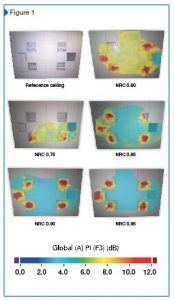by Gary Madaras, PhD

The pandemic of 2019-20 has made the world a far different place. While the threat of infectious diseases was already concerning, it has brought in a renewed consciousness about healthcare facilities and workers and patients. Few built environments are as critical to get right as the healthcare facilities designed, built, and renovated today.
Good buildings make people better. That is the conclusion of a growing body of research that is linking the architecture of healthcare facilities with the health and well-being of patients and staff. Evidence-based design principles blend information on human behavior with traditional design tools in order to create facilities that help reduce recovery times and medication use, decrease levels of aggression, and support better sleeping patterns and calmness.
Materials have an important influence on the appearance, feeling, sound, and performance of a building and its interior spaces. Choosing materials that foster a clean, comfortable, calm, and aesthetically pleasing environment helps create spaces where people heal and recover faster.
Importance of the ceiling system
The specification of a ceiling system provides important functionality, safety, and aesthetics to a healthcare facility by:
- enhancing acoustic qualities that allow doctors, nurses, staff, and patients to hear clearly and not be overcome by noise;
- using durable materials with no added antimicrobials that hold up to infection control and cleaning measures;
- improving natural lighting and providing proven daylighting attributes;
- employing non-chemically treated materials to lessen the chemical load on patients;
- utilizing non-organic materials that inherently resist mold and bacteria; and
- offering sustainability, a key aspect for any healthcare building’s ceiling design.
This is a lot to ask of a ceiling system or any surface in a healthcare facility, but the stakes are high when people’s well-being is in the balance.

Importance of acoustic design
Healthcare settings are noisy. Alarms, paging systems, and phones along with staff and visitor conversations, all add up to a level of noise that affects patients’ potential for recovery and staff performance. Sleep deprivation, alarm fatigue, and privacy concerns are acoustic challenges that can be improved with high-performance, sound-absorbing ceiling solutions.
Impact of acoustics on patients
For residents in an assisted-living facility or for patients in an acute-care facility, it is difficult to cope with a series of sleepless nights due to noise. The right acoustic environment helps promote restorative sleep cycles, speedier recuperation, patient rehabilitation, and general well-being. Highly sound-absorptive ceilings improve acoustics of inpatient care units and help reduce the disturbing sounds of voices, equipment, and footsteps and cart noises in busy corridors.
In examination or consultation rooms, it is important the doctor and patient can talk in a quiet and private environment. The Health Insurance Portability and Accountability Act (HIPAA) mandates private information, even when it is spoken, remains confidential. Building materials should facilitate both speech intelligibility and the prevention of sound traveling into adjacent rooms.
The Center for Health Design (CHD) has developed guiding principles to transform healthcare settings into healing environments that improve outcomes through the creative use of evidence-based design. According to CHD, a recent study in Sweden modified an intensive coronary-care unit’s room acoustics by switching between sound-absorbing and sound-reflecting ceiling panels, and assessed the impact on patient and staff outcomes. During the good acoustical conditions, where sound-absorbing ceiling panels were used, pulse amplitudes were lower among patients in the acute myocardial infarction and unstable angina pectoris groups as compared to the bad acoustical conditions, where sound-reflecting ceiling panels were installed.




